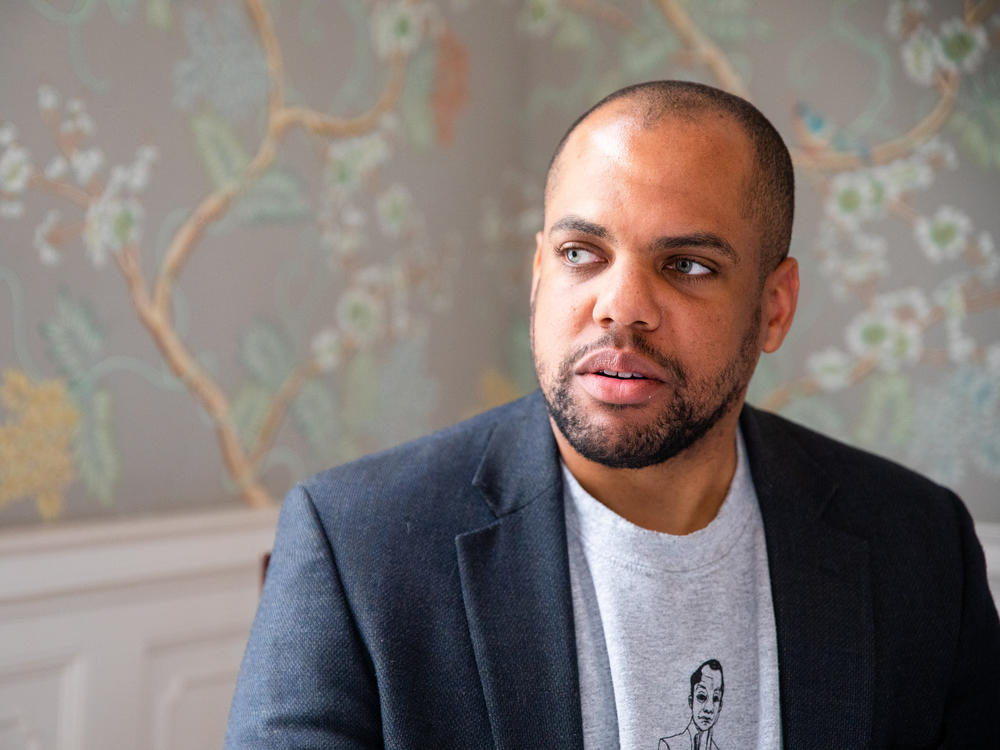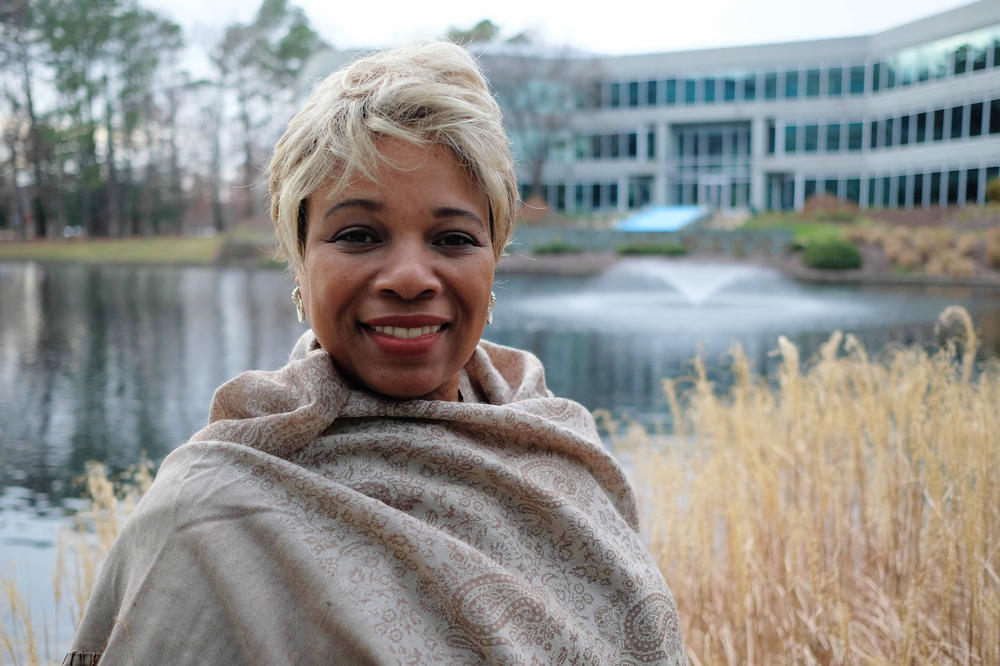Section Branding
Header Content
Descendants Of People Enslaved By Virginia's Governors Are Reframing History
Primary Content
In Virginia's Executive Mansion, grand rooms are filled with oil paintings and roped-off period furniture. Visitors could go the entire trip without seeing a smaller, more modest brick building tucked to the side of the home.
But for more than 50 years, enslaved people served governors from the kitchen quarter — those governors who uprooted enslaved people from across the state to the capital in Richmond, Va.
Descendants of the enslaved are now leading an effort to complete the history of the mansion, which is the oldest continuously occupied governor's residence in the United States.
"This isn't a box to check," says Justin Reid, who is leading the effort. "This is something that's integral to the story of the Executive Mansion."
And institutions across Virginia are turning to descendants as they reckon with their history of slavery.
At the University of Virginia, researchers have begun to contact descendants of some of the estimated 4,000 enslaved people who lived and worked at the university from 1817 through 1865. President James Monroe's old home, Highland, has formed a Council of Descendant Advisors to help reinterpret the site's history. Oral histories from ancestors of people enslaved by Thomas Jefferson play a key role in an updated exhibit at his home, Monticello.
The work is personal for Reid, the director of community initiatives for Virginia Humanities, the state office of the National Endowment for the Humanities. During his work researching the history of the mansion, he came across a portrait of Mary Randolph Harrison, Thomas Jefferson's first cousin. "There was a picture of a woman who enslaved my own family," Reid says.
Reid recalls hearing stories of enslaved ancestors from his grandmother, who'd passed them down from her grandparents. "I was raised by someone who was raised by an enslaved person," Reid says. "So these stories are closer than we think."
A few of the enslaved workers at the mansion were able to receive letters from home that provide compelling glimpses into their lives. More often, written records of the enslaved were told from the perspective of white enslavers. Oral histories, Reid says, can help round out the historical record.
The group of roughly 20 descendants Reid has assembled for the Executive Mansion project includes Kerri Moseley-Hobbs, whose ancestors were enslaved by former Virginia Gov. James Preston on land that is largely now part of Virginia Tech.
One relative, Virginia Fraction, was known as "Aunt Ginny" by the white children she helped raise and was buried in the Preston family cemetery. Moseley-Hobbs was able to glean bits of the personality of Virginia's two younger brothers — the sarcastic Thomas and talkative Othello — from interviews documented by the Freedmen's Bureau and military records over a dispute with Robert Preston. Both Thomas and Othello fled the plantation to join the Union Army and were shot at by Preston when they returned in 1866.
Moseley-Hobbs now works alongside other descendants and white ancestors of the Prestons as she updates the plantation's history, and is separately working with the university on a similar project.
"We're in the middle of our history of slavery," Moseley-Hobbs says. "We're not done with it yet."
Virginia found itself right in the middle of another reckoning last year after reporters found a racist photo on Gov. Ralph Northam's 1984 medical school yearbook page. The Democrat held a press conference in the Executive Mansion where he denied he appeared in the photo but admitted to wearing blackface as part of a Michael Jackson costume. Later, first lady Pam Northam came under fire after she handed out cotton to student pages on a tour of the mansion; a Black student felt she'd been singled out, though other students disputed her account.
While politicians have largely moved on from the scandals, some Black activists say Northam hasn't shown enough leadership on issues such as criminal justice reform. Historian Lauranett Lee speaks highly of the governor but gets the critics' point.
"I can understand the frustration because there is so much that needs to be done," she says.
Lee teaches at the University of Richmond and works alongside the first lady, a key backer of the Executive Mansion project. Lee says she wants to connect their work at the mansion to modern Richmond, which was once a center of the domestic slave trade. A large slave jail sat down the hill from the Executive Mansion. Until this summer's protests, Confederate statues dotted the city.
For Lee, monuments tell the story of whom society looks up to. The enslaved people who built Richmond, who powered Virginia's economy, didn't get statues. But Reid sees their mark everywhere.
"In many parts of this country, but especially in Virginia, you really can't go anywhere and not enter a landscape of slavery," Reid says.
It's a history, Reid says, that is best told by the ancestors of the people who lived it.
Copyright 2020 VPM. To see more, visit VPM.



